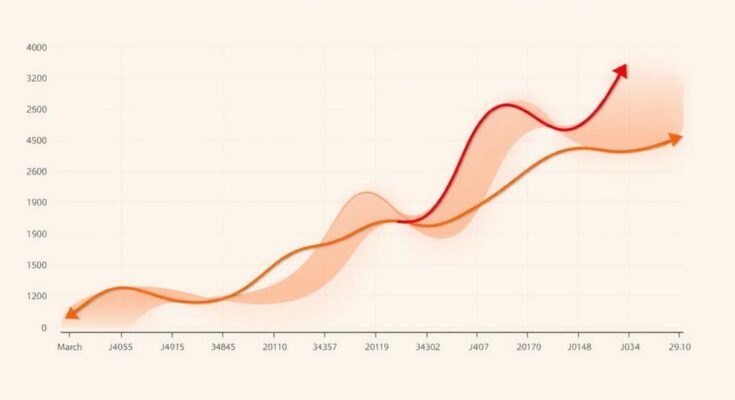Nigeria’s inflation rate has decreased to 23.18% in February 2025, showing an improvement from January’s 24.48%. Year-on-year, this is 8.52% lower than February 2024’s rate. The report highlights month-on-month increases and sector-specific changes, including a drop in food inflation. The impacts of recent CPI rebasing efforts are acknowledged to align economic indicators with current realities.
The National Bureau of Statistics (NBS) reported that Nigeria’s headline inflation rate decreased to 23.18% in February 2025, down from 24.48% in January 2025. On a year-over-year basis, this figure is significantly lower, showing an 8.52% decrease compared to the 31.70% recorded in February 2024. The data was disclosed in the Consumer Price Index (CPI) and Inflation Report released in Abuja.
The CPI report indicates a month-on-month inflation increase of 2.04% for February 2025. This uptick can be attributed to rising costs in a variety of sectors, including food, non-alcoholic beverages, accommodation services, transport, and healthcare. Specifically, significant rises were noted in categories such as education, housing, clothing, and various services.
Food inflation has also experienced a decline, resting at 23.51% year-on-year, down from 37.92% in the prior year. However, the month-on-month food inflation rate stood at 1.67%. The reduction in food prices for items such as yam and potatoes contributed to this decline. Meanwhile, core inflation, excluding volatile sectors, registered at 23.01% year-on-year, down from the previous year’s 25.13%. On a monthly basis, core inflation was noted at 2.52%.
Urban and rural inflation rates displayed different trends. The urban inflation rate for February 2025 was 25.15%, marking an 8.51% drop from the 33.66% recorded in February 2024, while rural inflation was reported at 19.89%, down by 10.09%. Month-on-month, urban inflation increased to 2.40%, whereas rural inflation was slightly lower at 1.16%.
Analysis of inflation across states showed that Edo had the highest year-on-year inflation rate at 33.59%. Conversely, Katsina recorded the lowest increase at 15.45%. On a month-on-month basis, Sokoto exhibited the highest inflation rate at 11.98%, while several states, including Kaduna and Ondo, noted negative growth in inflation.
Food inflation was highest in Sokoto at 38.34% year-on-year, with Adamawa showing the slowest rate at 12.18%. On a month-to-month basis, Sokoto also led with food inflation at 18.83%, whereas Ondo recorded the slowest at -9.81%. This report follows recent adjustments in the CPI to reflect current economic conditions, with updates to the consumption baskets and data collection methods.
The rebasing effort, as articulated by the Statistician-General of the Federation, Adeyemi Adeniran, aims to keep Nigeria’s economic indicators relevant and reflective of contemporary societal dynamics.
In summary, Nigeria’s inflation rate has shown a favorable decrease in February 2025, with headline inflation at 23.18%. Across various sectors, particularly food and core items, there have been notable reductions. Furthermore, both urban and rural inflation rates reflect positive movement, although disparities exist among states. The ongoing adjustments to the CPI are intended to improve the accuracy of economic assessments.
Original Source: businessday.ng




